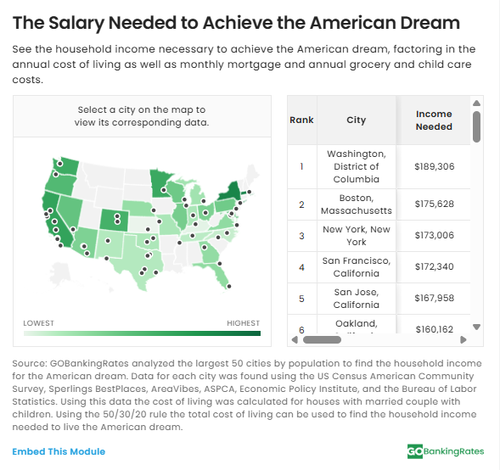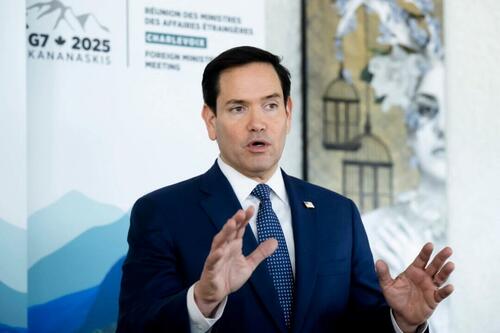Spain’s Vox Party Spokesperson Faces Hate-Crime Probe After Calling Out Link Between Immigration & Crime
Authored by Thomas Brooke via Remix News,
A Spanish conservative lawmaker is facing a hate crime investigation after a press conference in which he highlighted the link between mass immigration and rising crime rates — a connection supported by official data but often ignored by Spain’s far-left administration.
José Antonio Fúster, national spokesman for the populist Vox party and member of the Madrid Assembly, addressed the media on July 29 last year, where he read out the forenames of several dozen individuals arrested during violent incidents in Barcelona that weekend.
“Sabar, Omar, Nassim, Abdelkader, Salah, Salah, Younes, Karim, Jamil, Amir, Ali, Oussama, Hassan… I can go on. Do you notice any patterns? Do you notice anything?” Fúster asked.
“We do, and this is what we have been denouncing for a long time, that the open-door policy of the Popular Party and the PSOE has direct consequences on the security of Spaniards,” he added.
Though the list he read had the surnames redacted and had already circulated online via party channels, his public use of it has led the National Police to file a report for alleged incitement to hatred. Fúster, protected by parliamentary immunity as a sitting deputy, expressed disbelief upon receiving the notification last week and doubled down on his comments.
“We’re constantly told that immigration and crime have no link,” Fúster said, as cited by Spanish digital newspaper The Objective.
“But they’re not fooling anyone. The criminals that Spaniards endure in their neighborhoods have names — and we all know them.”
Vox maintains that spurious criminal complaints are part of a wider effort to silence those who raise valid security concerns. The party highlighted charges against MP Rocío de Meer last year for writing, “The future of this country is dark,” in response to the birth of a child named Ayoub in a rural Spanish village, and Jordi de la Fuente, another Vox figure, who is awaiting trial over a 2019 protest targeting an asylum center.
José Antonio Fúster: “El listado de los 50 primeros detenidos durante la noche del sábado en Barcelona: Sabar, Omar, Nassim, Abdelkader, Salah, Salah, Younes, Karim, Jamil, Amir, Alí, Oussama, Hassan… puedo seguir. ¿Notan ustedes algún patrón?”.
Según algunos denunciar la… pic.twitter.com/0cARZATX1w
— Sr.Liberal (@SrLiberal) March 30, 2025
The party continues to call for reform of Article 510 of the Penal Code, which defines hate crimes, arguing it has been weaponized to censor uncomfortable conversations. In a recent interview, Vox leader Santiago Abascal remarked, “What they call ‘hate speech’ is often just speech they hate. We’re simply describing reality, and it’s backed by the government’s own data.”
Some of that government data was reported on by Remix News last month after an information request by La Gaceta online newspaper found a growing trend in violent crimes involving foreign nationals.
Between 2013 and 2023, for example, homicides involving foreign suspects soared by 69 percent compared to a 28 percent increase in total cases.
Similarly, the Spanish Interior Ministry’s own crime stats for 2023 revealed that the top 10 Spanish cities with the highest rates of violent robberies and intimidation were all located in Catalonia, with foreigners vastly overrepresented.
The data showed that there are 8,505 inmates in Catalan prisons and that 50.48 percent of them are foreigners.
When focusing on specific violent offenses like rape, 91 percent of those convicted in Catalonia are foreigners. When it comes to sexual assault and rape combined, 64.2 percent of all prisoners are foreigners.
Fúster received plenty of support from party colleagues following the news of the criminal complaint.
“Sabar, Omar, Nassim, Abdelkader, Salah, Salah, Younes, Karim, Jamil, Amir, Ali, Oussama, Hassan… they were the ones arrested. And yes, we could go on because it was a list of the first 50 arrested during a single night in Barcelona,” said Vox secretary general Ignacio Garriga.
“Let them denounce us all, we will continue to tell the truth regardless of who it may be,” he added.
“Let’s not forget that the surnames of the criminals who have condemned us to this are others: Sánchez, Bolaños, Marlaska, Montero, Díaz… and their bipartisan allies,” wrote party leader Santiago Abascal on X.
Tyler Durden
Tue, 04/01/2025 – 02:00
via ZeroHedge News https://ift.tt/gYTlCFA Tyler Durden











